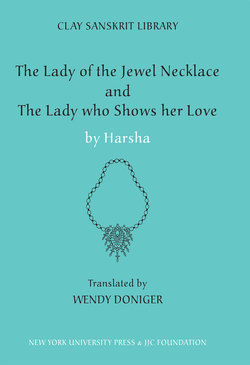Читать книгу The Lady of the Jewel Necklace & The Lady who Shows her Love - Harsha - Страница 36
На сайте Литреса книга снята с продажи.
Оглавлениеshould say, and the storyteller imitates that paradigm, fulfills that expectation; the audience takes pleasure in predicting what will happen, and satisfaction in seeing it happen, rather than in being surprised or shocked.
In addition to the general convention of the well-known Indian tale of Udayana and Vasava·datta, ‘The Lady of the Jewel Necklace’ also follows the cross-cultural convention of what literary critics call the recognition narrative, the ultimate revelation of the identity of someone who has been in disguise for much of the story. The recognition narrative served, like the theme of the Pietà or the Madonna and Child for medieval European sculptors, as a classical, shared theme that challenged the artist to use it as a foil for individual originality—for tellers of myths can, in fact, be highly original, as long as they also take pains to touch all the bases that their audiences expect. The recognition scene in narratives is a cliche, which has led literary critics and cultural snobs (two often intersecting groups) commonly to regard such stories with contempt and suspicion. But the audience enjoys the way that, as the story unfolds, we see through the disguise of the new superficial details—a different character, a different country—to realize that it is, in fact, our old friend the finally revealed heroine. When the victim in a masquerade narrative finally recognizes the masquerader (“Oh, it’s the princess!”), the reader or listener of the story recognizes the plot (“Oh, it’s a recognition story!”). And it is precisely this known quality of the cliche plot (plus its intrinsic appeal: cliches endure because they represent truths) that makes it ultimately fulfilling. The moment when the two apparently different characters are revealed to be two ________
